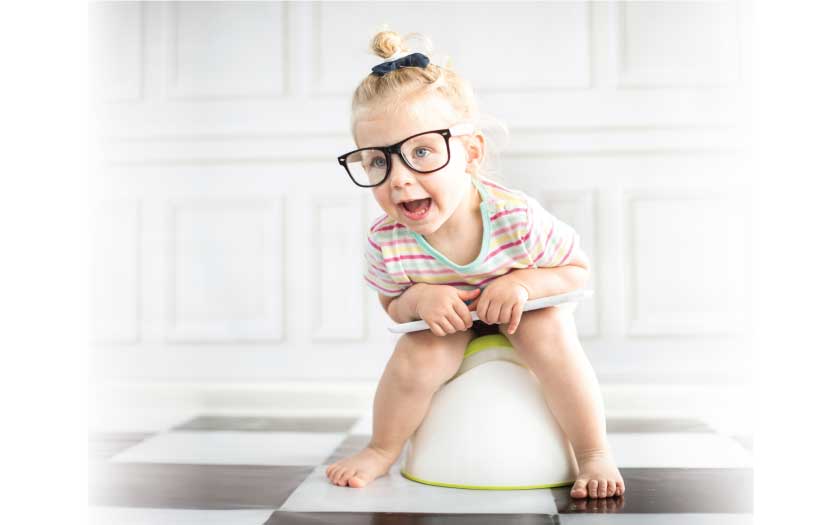Parents of babies and toddlers generally anticipate the day their little one will be toilet-trained. The sheer convenience of this development would be one to look forward too, but let’s not neglect the financial aspect of it too, for it will help shave off huge spendings on diapers.
However, before this happens, parents will have to prepare their little ones to use that little thing called potty. While there’s no set age to start learning to use the potty, most toddlers seem to develop the necessary physical and mental skills between 18 and 24 months. Some kids though aren’t there until closer to age 3 or even 4. Parents can keep a lookout for signs that their toddler might be ready to give the potty a try.
Have a potty plan
Before you get all excited to go out and buy the most cutest potty available in the market, do have a reasonable plan as to how you are going to get junior to use it in the first place. The training process itself will need some considerable thought on your part. Decide when and how you want to start, and how will you handle possible accidents.
You will need to be flexible for there is no way to know how your child will respond to potty training attempts or what techniques will work best. Keep in mind that as with most developmental milestones, success in using the potty won’t necessarily be achieved the way you expect it. Your child may make initial progress only to fall back along the way before being a fully trained potty user.
Slow and steady does it
Learning to use the potty is much more than just ditching the diapers and sitting on that little throne to do their little business. It involves mastering the various steps of potty training and that can take some time. While some toddlers will have it nailed in just a few days, most would need weeks or even months. This is especially so if they’re working on staying dry for the whole night.
Resist pushing your toddler to get through potty training faster than he or she is ready to, — and don’t go competing with other parents.
Let your little one take the time needed to get used to this new, multipart experience. Of course, it’s perfectly alright to try to motivate with gentle reminders and encouragement. If there is balking though, then it’s a sign to ease up, take a step back and allow the little one more time to get through this process.
Praise your little potty user!
All children respond favorably to positive reinforcement and the same goes for a toddler undergoing potty training. As much as possible, acknowledge all attempts junior makes to use the potty (even when it is not successful) and do let him or her know that they’re doing well and that mummy feels proud of such a good little boy/girl. Offer compliments now and then on their dry diaper or underwear.
However, so be careful not to go overboard with your compliments, for too high praises might bring forth nervousness and the worry of failure which might be a setback in potty training.
Sit your child on the potty each day at times when he’s likely to have a bowel movement, like 30 minutes after eating or after having a bath.
Accidents will happen
Potty accidents, perhaps even some messy ones, are bound to happen before your little one is completely potty trained. It is essential not to lose your cool or show anger at these incidences. Authoritarian or tiger parenting approaches would rarely work in this case. The last thing you want is for junior to hold back from answering nature’s call for fear of being reprimanded if an accident happens during the potty session of if a mess is made.
Little ones will have to practice control over their bladder and bowel movements and this might take some time. So, if an accidental mess is made, calmly clean it up and suggest kindly that next time he tries to get to the potty in time.
Baby Potties
That toilet in your bathroom may be looking big and scary to your child. A typical toilet seat is much wider than their little bottoms and the fear of falling in is very real for a little potty training kid (No, they’re not making it up!). Likewise, a little kid will not be able to ‘go’ comfortably unless he or she is completely at ease on that little throne they’re asked to sit on. Here are some things to consider before buying a potty for your child:
1. Comfortable Seat
Check the potty seat for comfort. The seat does not have to be soft and squishy but should be void of any rough edges and a child should be able to sit down on it with ease.
2. Low Chair
For early potty training, shop for a squat chair. Toddlers can sit comfortably on these.
3. Character Potty Chair
A potty chair featuring your child’s favorite book, movie, or TV character? Why not?
4. Potty Chair and Step Stool
If you want to make your potty chair investment go further, purchase a potty chair that can also be used as a chair or a stool. Some potty chairs become step stools that potty-trained children can use later, to climb onto the big toilet.
5. Detachable Toilet Seat
At some point, you will need to purchase a kiddy toilet seat that fits over the regular toilet seat. Potty chairs work for training kids to urinate, but they may not be willing to poop in the potty chair. Consider a potty chair with a detachable toilet seat.
6. Handled Toilet Seat
Opt for a child toilet seat with handles on it. When the seat is placed under the sink or tucked away the handle makes it easier for a child to grab the seat in a hurry.
Featured image source: Shutterstock


